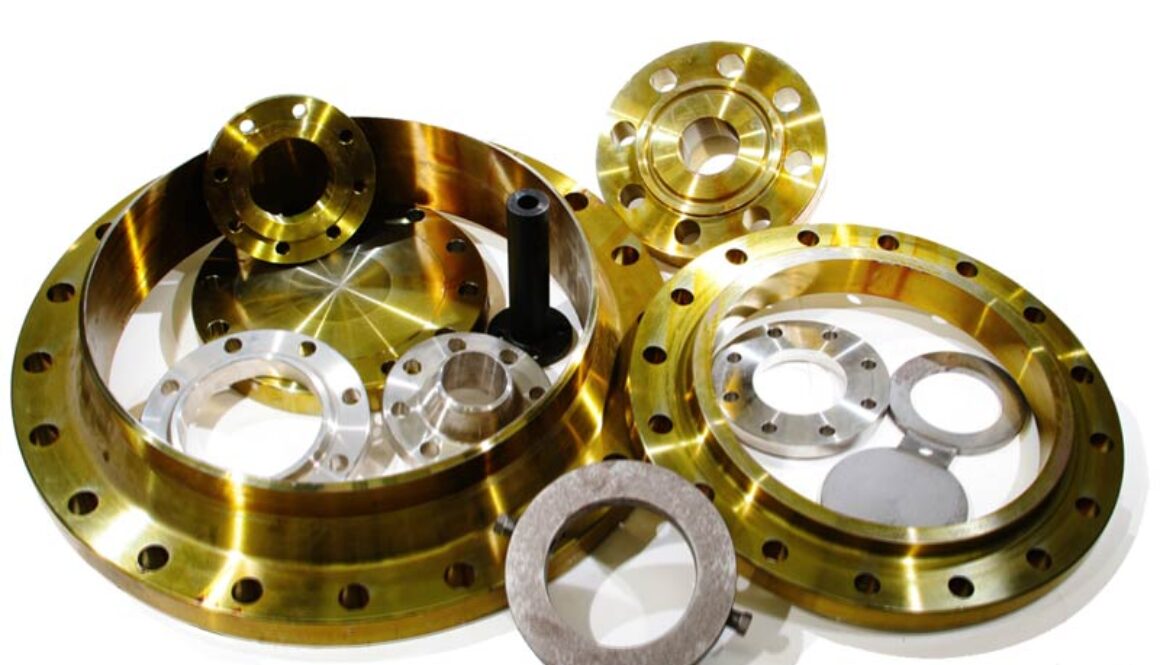What are flanges?
Flanges are a very common connecting element in the world of industrial equipment.
They are used in many different areas, even in the everyday household pipe work.
We often hear about them, but except for those technical environments where they are produced, it is difficult to have an idea of how common they are as industrial elements and above all of how important they are.
Shall we find out together?
Flanges
Flanges are nothing more than a joining and welding element of several metal sections.
In simpler terms: rings that connect tubes.
The assembly space circumscribed by a flange along the pipe is called spool.
Flange manufacture
We tend to think that flange machining is something elementary, having a simple assembly function.
Nothing could be more wrong.
Just think how many metal elements need to be welded, think of the many uses in industry, in addition to domestic ducts assembled with these elements?
Can you get an idea of how many there are?
Types of processing
In general, we can distinguish two different machining techniques for forging it:
- Microfusion: the classic method that consists in melting the metal and then casting it in special molds. The advantage is to obtain defined and regular surfaces;
- Hot forging: in this case, the block of metal is brought to a temperature that is not so high as to promote fusion, but still sufficient to ensure a certain ductility and moldability through the use of a hydraulic press.
Which is the best process?
The question as to which of the two techniques is preferable in the machining of these elements arises spontaneously and compulsorily.
If you thought that the right answer would be investment casting, I’m afraid you will be disappointed.
It is true that hot forging gets you essentially less finished flanges, but the metal gains in structure and compactness., features that are not retained with investment casting.
With the latter it is easy to have inclusion problems, which can cause fluid leakage in a subsequent time and in the presence of high pressures.
Different flanges according to function
Each weld requires a particular flange and a specific metal.
The metal consists of an alloy that has specific characteristics with respect to the technological function of the flange.
Just think how many types of fluids can be transported.
Can you imagine the temperature, pressure and nature of these elements?
Gas, oil, water, steam: each of these materials will require a specific flange, forged and synthesized with the most suitable metal.
Standards and classification
Precisely on the basis of these characteristics, flanges are very strictly and rigorously standardized.
The classification considers their minimum pressure (i.e. how much pressure the flanges can safely withstand at room temperature).
There are conditions that subject flanges to a more peculiar classification, but in general the recurring classification consists of:
- ANSI/ASME B16.5 and B16-47 much in use in the U.S., particularly in the petroleum industry:
- EN 1514 EN 1092, used in the rest of the world.
Two classifications of flanges
The classification that is the reference of the Anglo-Saxon culture includes flanges and flanged fittings.
It takes into account aspects such as pressure and temperature, which are very important in the design phase.
It also considers materials, tolerances, marking, and everything else that is important for passing the conformity test.
On the other hand, EN 1514 and EN 1092 refer to the various types of flanges, specifying dimensions, tolerances and possible threads.
It also evaluates the materials and the necessary price marking.
Various types of flange
Generally speaking, we can distinguish six different models, whose design responds to the specific technological use for which they are intended.
Today, the different models allow the use of flanges at any temperature and in any environmental condition, in various and transversal sectors.
In order to distinguish them more specifically, we can divide the flanges into these categories:
- slip-on or flat
- welding neck
- socket weld
- lap-joint and swivel
- threaded
- blind
What metals?
The number of metal alloys from which flanges are made is huge.
Commonly, the flanges are made of steel but, more specifically, depending on the use and the material transported, we can distinguish the metal used in seven macro areas:
- Carbon Steels
- high strength steels
- alloy steels
- stainless steels
- duplex/super duplex
- super alloys
- Copper Alloys
Pantalone flanges
Did you like this article about flanges?
The flanges market is the one that concerns us most closely and distinguishes our reality in the quality of the products proposed.
We have a very large stock of flanges, both of European and non-European origin.
Many flanges, suitable for any use, are made in the most varied steel alloys, from the smallest and most common diameters to large diameters.
Visit our contact page to learn more.
Also, for other curiosities about the industrial equipment sector, keep following our blog.


